very carefully. The safe and proper use of the oils is the sole responsibility of the reader. The authors and publisher assume no responsibility or liability for anyones misuse, carelessness, allergic reactions, skin sensitivity, or any other conditions arising directly or indirectly from the use of this book.
The publisher does not advocate the use of any particular healthcare protocol but believes the information in this book should be available to the public. The publisher and author are not responsible for any adverse effects or consequences resulting from the use of the suggestions, preparations, or procedures discussed in this book. Should the reader have any questions concerning the appropriateness of any procedures or preparation mentioned, the author and the publisher strongly suggest consulting a professional healthcare advisor.
Schiller, Carol.
The aromatherapy encyclopedia : a concise guide to over 385 plant oils / Carol Schiller and David Schiller ; illustrated by Jeffrey Schiller.
p. cm.
Includes bibliographical references and index.
1.AromatherapyEncyclopedias. 2.Essences and essential oilsEncyclopedias.
I. Schiller, David II. Title.
All rights reserved. No part of this publication may be reproduced, stored in a retrieval system, or transmitted, in any form or by any means, electronic, mechanical, photocopying, recording, or otherwise, without the prior written consent of the copyright owner.

Acknowledgments
Wed like to thank the following people:
Dr. Karl Werner Quirin, the pioneer of CO2 extractions, and founder and president of Flavex, a high-quality producer of CO2 extracts in Germany.
Norman Goldfind, founder and publisher of Basic Health Publications.
Bernard Otremba-Blanc, Ph.D., for seeing the benefits of the essential oils and sharing the information so more people can learn about and experience their great and important value.
To Harvey Farber, John Wendel, Ken Goodger, David Beaver, Dieter Kuster, Ph.D., Alban Muller, and Xavier Ormancey, Ph.D., for providing quality education at the AromaHerb Conference and Trade Show that helped people in the trade become more knowledgeable of the industry.
Ann Albers, an exceptional person and dedicated teacher; always helping people.
Sharon Muir, for supporting the education of aromatherapy so that many people can learn and incorporate the essential oils into their lives.
Roslyn Blumenthal, for her valuable insight.
The libraries are the greatest institutions for learning. We extend our gratitude to the librarians and staff at the Phoenix Public Library, especially: Greg Hills, Doris Foose, Maritza Jerry, Kathleen Birtciel, Keith Cullers, Caren Lumley, Debbie Fincher, Nancy Madden, Karen Berner, Alex Latham, Louis Howley, Randles Lunsford Jr., Delphine Snowden, Jonathan Cole, Rob Steele, and Rita Martinez.
The librarians and staff at the Glendale Public Library, especially: Joan Jensen, Anne Owen, and Stuart Levine.
INTRODUCTION

Aromatherapy Over the Years
 ince the beginning of recorded history, aromatic plants have been used to scent, beautify, and heal the body. In ancient times, wealthy Egyptians luxuriated in the pleasures of bathing in scented waters, indulging in a delightful fragrant massage, and perfuming their bodies with enchanting oils and ointments. The priests were the first perfumers and healers to dispense aromatics by preparing blends for the kings, queens, and high dignitaries of temples and governments. During religious ceremonies, they used aromatic waters in the anointing rituals, burned incense in an effort to protect against evil spirits, and help the worshippers concentrate on their prayers. When the pharaohs died, their bodies were wrapped with fabric containing cinnamon, myrrh, cedarwood, and other resins and oils. This mummification method was confirmed to have been effective when modernday archaeologists excavated the mummies and found them to be well preserved in their original burial chambers.
ince the beginning of recorded history, aromatic plants have been used to scent, beautify, and heal the body. In ancient times, wealthy Egyptians luxuriated in the pleasures of bathing in scented waters, indulging in a delightful fragrant massage, and perfuming their bodies with enchanting oils and ointments. The priests were the first perfumers and healers to dispense aromatics by preparing blends for the kings, queens, and high dignitaries of temples and governments. During religious ceremonies, they used aromatic waters in the anointing rituals, burned incense in an effort to protect against evil spirits, and help the worshippers concentrate on their prayers. When the pharaohs died, their bodies were wrapped with fabric containing cinnamon, myrrh, cedarwood, and other resins and oils. This mummification method was confirmed to have been effective when modernday archaeologists excavated the mummies and found them to be well preserved in their original burial chambers.
The ancient Romans lavishly perfumed their bodies and scented everything from military flags to the walls of their homes. Eventually Rome became the bathing capital of the world, with one thousand public bath houses located throughout the city for people to bathe, socialize, and afterwards enjoy a pampering massage with scented oils and unguents.
The art of extracting the volatile essences from plants was initiated by the Egyptians, who heated them in clay containers. Two centuries later, Greek alchemists invented the distillation process, which further developed the use of essences for religious and therapeutic purposes. By 1000 A.D., the Arabic physician, Avicenna, perfected the extraction method by introducing the cooling system into the distillation process, thereby creating the most potent essences with stronger fragrances.
During the fourteenth century, the Great Plague devastated Europe and Asia, killing millions of people. All aromatic substances available were used for their antiseptic properties to fight off the dreaded disease. Cedar, clove, cypress, pine, sage, rosemary, and thyme were burned in the streets, hospitals, and sickrooms in a desperate attempt to prevent the spread of the epidemic. It was reported that perfumers and those who handled and used aromatics of various kinds were virtually immune to the ravages of the plague and survived.
The study of the therapeutic effectiveness of essential oils was further advanced by Ren-Maurice Gattefosse, a French cosmetic chemist. In the early 1920s, while working in his laboratory, Gattefosse accidentally burned his hand and immediately immersed it into the nearest cold liquid, which happened to be a container of lavender oil. Surprisingly, the pain lessened and the reaction of redness, inflammation, and blistering was drastically reduced. In addition, the wound healed very quickly and no scar developed. After this incident, Gattefosse decided to dedicate the rest of his life to the study of the remarkable healing properties of the essential oils and coined the term aromatherapy in 1928.
Inspired by Gattefosses work, Jean Valnet, a French medical doctor, exclusively used the essential oils to treat the battle wounds of the French soldiers during World War II. Dr. Valnets extensive use of essences gained him official recognition in France and acknowledged aromatherapy as a true therapy. His book, The Practice of Aromatherapy, is a classic work on the subject.

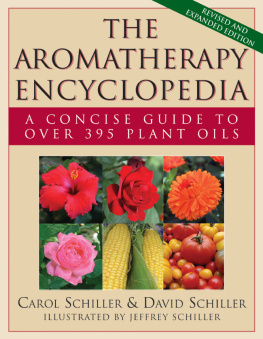


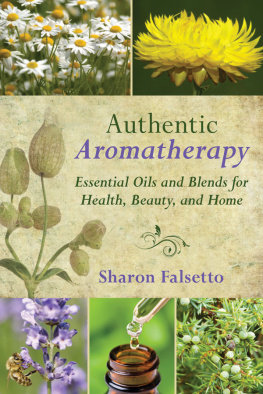

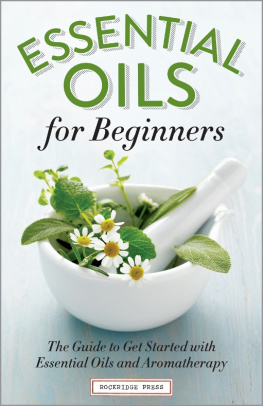

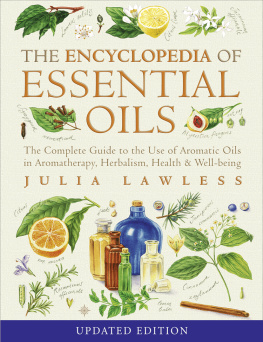
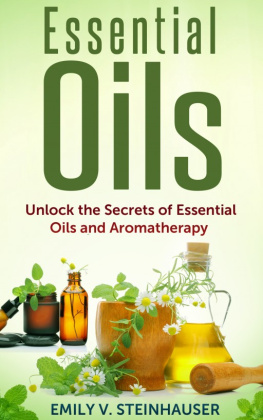
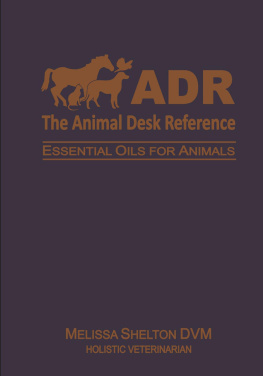
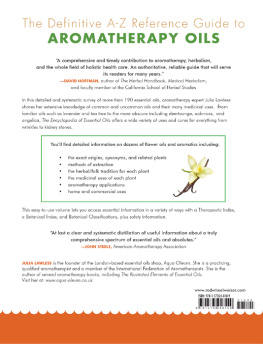


 ince the beginning of recorded history, aromatic plants have been used to scent, beautify, and heal the body. In ancient times, wealthy Egyptians luxuriated in the pleasures of bathing in scented waters, indulging in a delightful fragrant massage, and perfuming their bodies with enchanting oils and ointments. The priests were the first perfumers and healers to dispense aromatics by preparing blends for the kings, queens, and high dignitaries of temples and governments. During religious ceremonies, they used aromatic waters in the anointing rituals, burned incense in an effort to protect against evil spirits, and help the worshippers concentrate on their prayers. When the pharaohs died, their bodies were wrapped with fabric containing cinnamon, myrrh, cedarwood, and other resins and oils. This mummification method was confirmed to have been effective when modernday archaeologists excavated the mummies and found them to be well preserved in their original burial chambers.
ince the beginning of recorded history, aromatic plants have been used to scent, beautify, and heal the body. In ancient times, wealthy Egyptians luxuriated in the pleasures of bathing in scented waters, indulging in a delightful fragrant massage, and perfuming their bodies with enchanting oils and ointments. The priests were the first perfumers and healers to dispense aromatics by preparing blends for the kings, queens, and high dignitaries of temples and governments. During religious ceremonies, they used aromatic waters in the anointing rituals, burned incense in an effort to protect against evil spirits, and help the worshippers concentrate on their prayers. When the pharaohs died, their bodies were wrapped with fabric containing cinnamon, myrrh, cedarwood, and other resins and oils. This mummification method was confirmed to have been effective when modernday archaeologists excavated the mummies and found them to be well preserved in their original burial chambers.